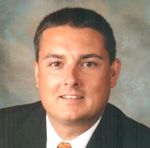This Labor Day, SMART General President Joseph Nigro will be present for the Omaha, Neb., Labor Day parade and other festivities. The SMART Transportation Division, led by Transportation Division Nebraska State Legislative Director Bob Borgeson, will also host other events at the Sheet Metal Workers Hall in Omaha Sept. 1-2.
The event kicks off with a “membership feed” Sept. 1 at 6 p.m. Members who show up will receive a T-shirt to wear for the parade. The Labor Day parade will be held Sept. 2 and line-up to walk in the parade is at 9 a.m. at 16th and Webster Streets. There will be mini-trains and a SMART TD caboose for children to ride on.
Borgeson encourages all SMART members in the Omaha area from both the transportation and sheet metal divisions to attend. For more information, contact him at (402) 679-0872, or email him at smartdirector@cox.net.
Author: paul
This Labor Day, SMART General President Joseph Nigro will be present for the Omaha, Neb., Labor Day parade and other festivities. The SMART Transportation Division, led by Transportation Division Nebraska State Legislative Director Bob Borgeson, will also host other events at the Sheet Metal Workers Hall in Omaha Sept. 1-2.
The event kicks off with a “membership feed” Sept. 1 at 6 p.m. Members who show up will receive a T-shirt to wear for the parade. The Labor Day parade will be held Sept. 2 and line-up to walk in the parade is at 9 a.m. at 16th and Webster Streets. There will be mini-trains and a SMART TD caboose for children to ride on.
Eight Transportation Division locals and two general committees are expected to be in attendance. Members from Omaha, Lincoln, North Platte, Alliance and Scottsbluff, Neb. are expected to be represented as well as Council Bluffs, Iowa. Around 400 members from both the Transportation Division and Sheet Metal Workers are expected to be in attendance.
Members can view the UTU in the parade from the past four years by going to YouTube and searching “UTU Labor Day.”
Borgeson encourages all SMART members in the Omaha area from both the transportation and sheet metal divisions to attend. For more information, contact him at (402) 679-0872, or email him at smartdirector@cox.net.

The video is appearing on monitors at the gates of all American and U.S. Airways flights at the 48 airports listed on this attachment during CNN broadcasts in August and September.
The video was produced by Clearwind Media to brand the name and acronym of the new organization and to provide a positive message to the public.
To view the video, click here.
Clearwind Media has also produced a three-minute interview with General President Joseph Nigro about the organization. Listen to the audio interview here.

CHICAGO – Gov. Pat Quinn issued an executive order Aug. 15 creating the Northeastern Illinois Public Transit Task Force, an independent panel of transit, finance and government leaders who will issue recommendations to reform the mass transit system in northeastern Illinois. SMART Transportation Division State Legislative Director Robert Guy is a member of the panel.
Guy graduated from Western Illinois University in 1991 with a bachelor of arts degree in broadcast journalism. In 1996, he was elected UTU Local 234’s local legislative representative and was re-elected in 1999 and 2003, becoming state legislative director in 2009. He has focused on expanding Amtrak service and working on safety legislation and other issues.
“Safety and efficiency are important issues in transit operations. Illinois State Legislative Director Bob Guy understands the necessary components of providing these vital services with on-time performance. This appointment is an honor for Bob and an opportunity for our transit riders in Chicagoland,” said SMART Transportation Division President Mike Futhey.
The 15-member, blue-ribbon task force is charged with developing ways to eliminate waste, fraud and abuse and streamline operations to ensure improved transit service for the millions of users each year.
The task force will issue recommendations to be considered by the General Assembly and Gov. Quinn for both the veto and spring sessions.
The executive order is part of Gov. Quinn’s agenda to strengthen oversight of mass transit in northeastern Illinois and restore commuters’ confidence. The governor’s move comes in the wake of recurring scandals at Metra and ongoing accountability problems over the last decade.
“It’s clear that the mass transit system in northeastern Illinois is not working for taxpayers,” Quinn said. “This task force is a step forward to make our transit system worthy of the public’s trust. Their recommendations will be valuable as we work in both the veto and spring sessions to reform mass transit in northeastern Illinois.”
The task force will develop recommendations to revamp the oversight of mass transit in northeastern Illinois. The task force will work to provide initial recommendations to the governor and the Illinois General Assembly prior to the fall veto session, and they will issue a final report by Jan. 31, 2014.
Other members of the Northeastern Illinois Public Transit Task Force include:
Co-chair George Ranney Jr., president and CEO of Metropolis Strategies; Co-chair Ann L. Schneider, secretary of the Illinois Department of Transportation; Carole L. Brown, currently a managing director at Barclay’s Capital; Patrick Fitzgerald, former U.S. attorney for the Northern District of Illinois; Adrienne M. Holloway, assistant professor of political science at DePaul University’s School of Public Service; Sylvia Jenkins, president of Moraine Valley Community College; Nick Palmer, chief of staff for Will County Executive Larry Walsh; Tony Paulauski, executive director of The Arc of Illinois; Raul Raymundo, executive director of the Resurrection Project, an organization dedicated to creating healthy communities through organizing, education and community development; Robert G. Reiter Jr., secretary-treasurer of the Chicago Federation of Labor (CFL); Ashish Sen, a member of the Chicago Transit Authority board of directors; Don Tantillo, retired high school teacher and debate coach who worked at Wheeling High School; Kathryn Tholin, CEO of Center for Neighborhood Technology; and Sonia Walwyn, vice president of Duff & Phelps, LLC.
OMAHA, Nebraska — A trial judge was wrong to order BNSF railroad to pay the full amount awarded by a jury to a former railroad worker without deducting federal railroad retirement taxes, the Nebraska Supreme Court ruled Friday.
Eddie Heckman, of Alliance, was injured on the job in 2003 and sued the railroad in 2004. A jury awarded Heckman $145,000 in 2011. BNSF paid the award, but deducted $6,200 to cover the tax withholding it says it must pay on compensation for lost wages.
Read the complete story at The Republic.
 Rail use in America continues to climb ever higher. In July, Amtrak posted its busiest ridership month ever. But what are the busiest individual routes?
Rail use in America continues to climb ever higher. In July, Amtrak posted its busiest ridership month ever. But what are the busiest individual routes?
Let’s take a look. Here are the 10 highest ridership Amtrak routes, as of July, 2013.
Read the complete story at greatergreaterwashington.org.
 Members of the International Association of Sheet Metal, Air, Rail and Transportation Workers using airline travel throughout the United States may have noticed a commercial touting the efforts of their labor organization.
Members of the International Association of Sheet Metal, Air, Rail and Transportation Workers using airline travel throughout the United States may have noticed a commercial touting the efforts of their labor organization.
The video is appearing on monitors at the gates of all American and U.S. Airways flights at the 48 airports listed on this attachment during CNN broadcasts in August and September.
The video was produced by Clearwind Media to brand the name and acronym of the new organization and to provide a positive message to the public.
To view the video, click here.
Clearwind Media has also produced a three-minute interview with General President Joseph Nigro about the organization. Listen to the audio interview here.
OTTAWA – A Canadian government agency has determined that the U.S. rail company whose runaway train crashed into a small Quebec town, killing 47 people last month, has adequate insurance to keep operating for the next month and a half.
The Canadian Transportation Agency said the Montreal, Maine & Atlantic Railway provided evidence it had adequate third-party liability insurance coverage to operate from Aug. 20 to Oct. 1, 2013. The agency’s decision late Friday reversed an Aug. 13 order that would have halted the railroad’s operations from early next week.
Read the complete story at the Associated Press.
Canadian Pacific Railway Ltd. says it holds no financial responsibility for the Lac-Mégantic rail disaster and has rejected a legal demand by the Quebec government that it help pay for the cleanup in the devastated town.
The railway announced Thursday that it will appeal the province’s legal order.
Read the complete story at The Globe and Mail.

The meeting is scheduled to last from 8:30 a.m. until 4:30 p.m. both days in the Oklahoma Room in the DOT Conference Center, 1200 New Jersey Ave. S.E., Washington, DC 20590.
Anyone who wants to present an oral statement should notify Kurt Eichenlaub, Railroad Safety specialist in the Hazardous Materials Division’s Office of Safety Assurance and Compliance at FRA, at least four business days prior to the meeting at (20) 493-6050 or Kurt.Eichenlaub@dot.gov.
Comments also may be submitted electronically at www.regulations.gov (Docket No. FRA-2013-0067).
This article originally appeared at www.ohsonline.com.